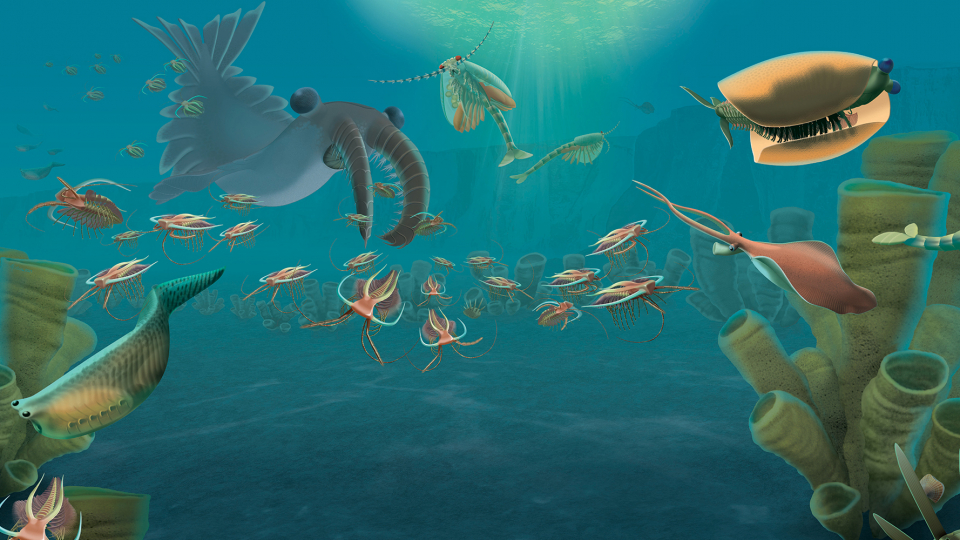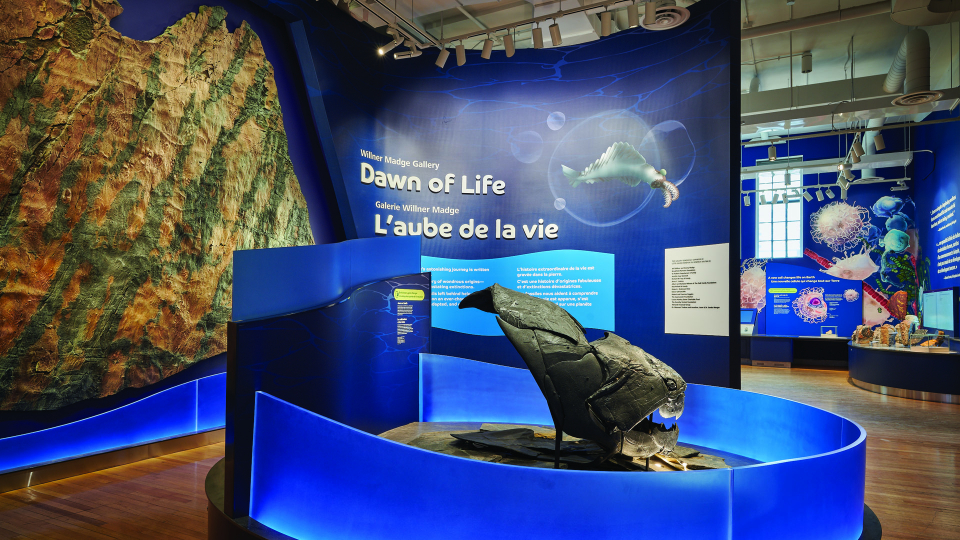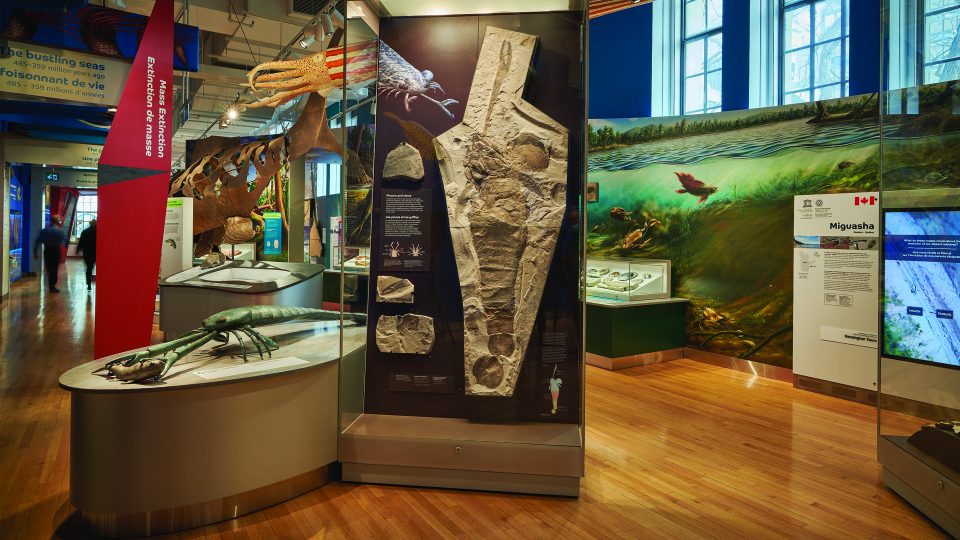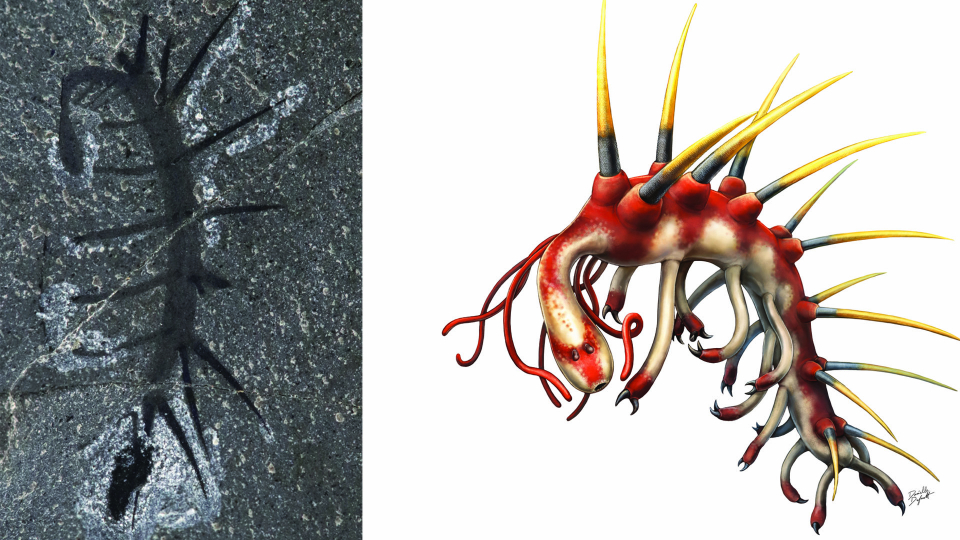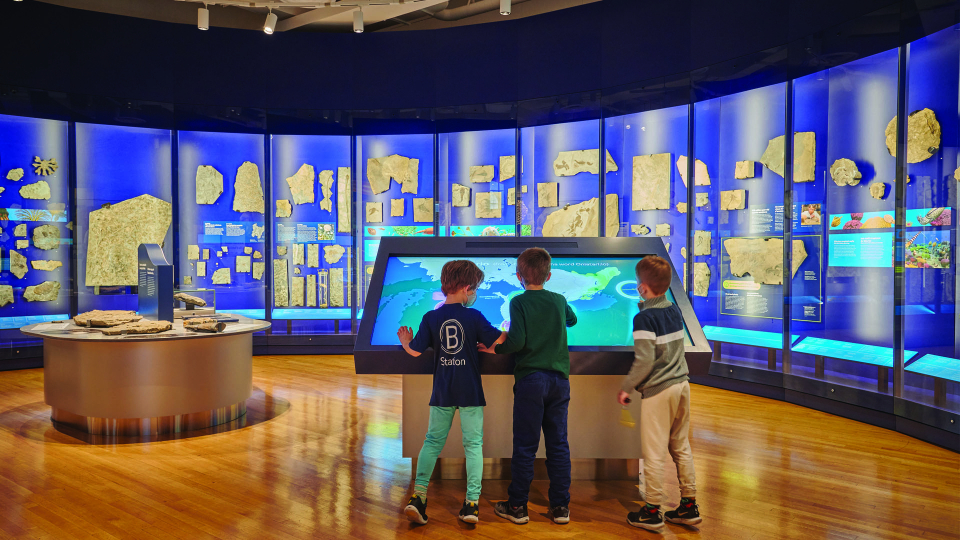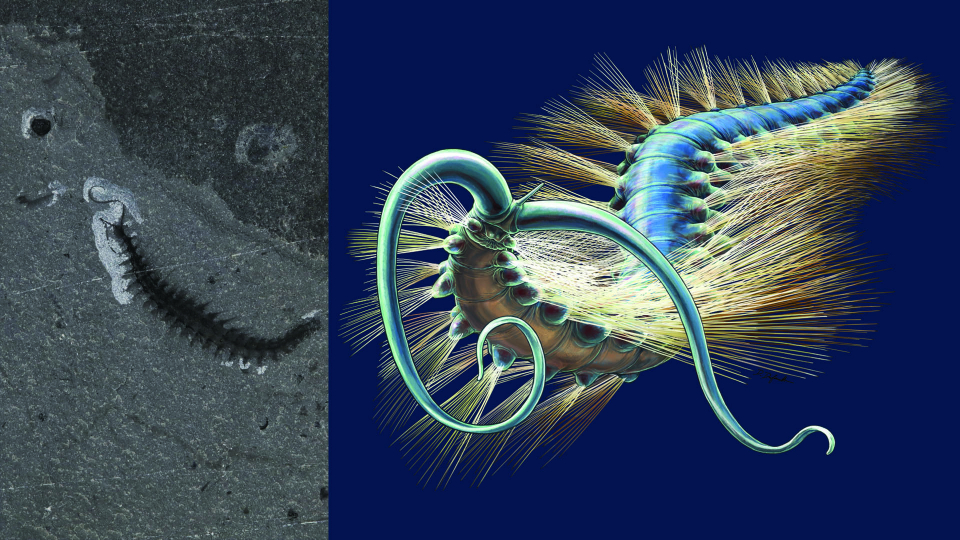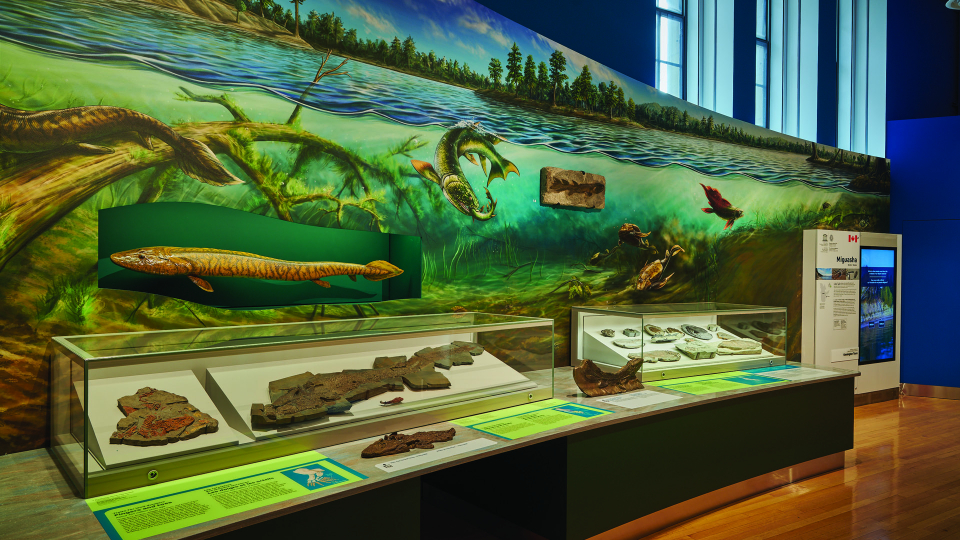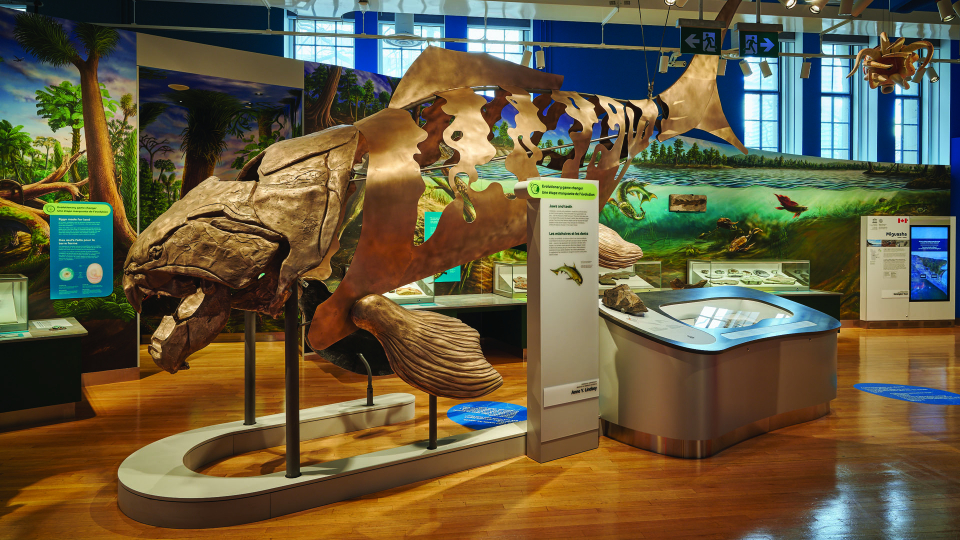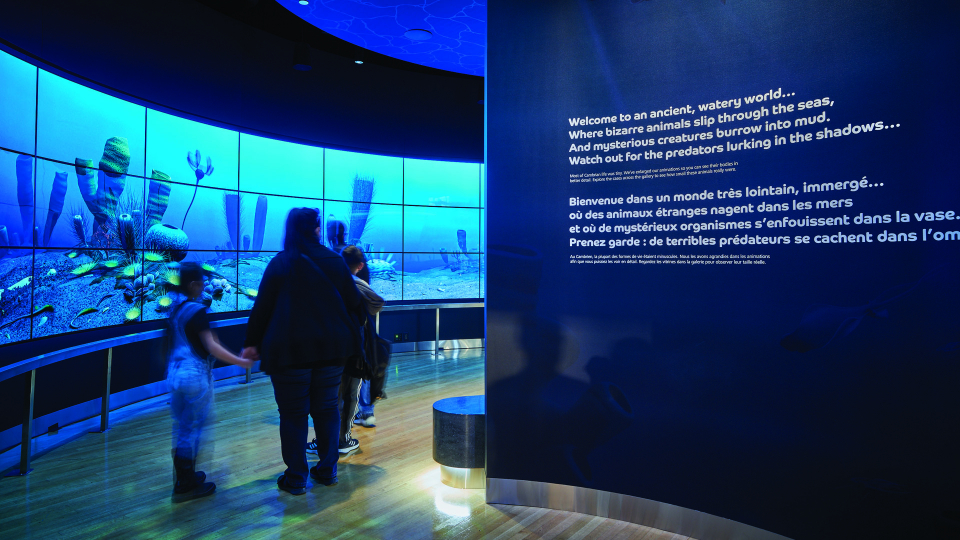The first gallery of its kind in North America brings the dawn of life to life.
How old is life itself? When did we come from? How did life suddenly begin? Did all life begin the same? Has this happened before? What evolutionary changes shaped the world we know today?
Every answer uncovers more questions.
Take an epic journey back — about 4 billion years — to the origins of life on our planet. Enter ROM's exciting new gallery and explore, through one of the world's most astounding fossil collections, the wondrous beginnings and devastating extinctions that have shaped our planet, from the dawn of life up to the age of dinosaurs.
It's an astonishing timeframe — and some of the planet's oldest evolutionary stories are preserved in the rocks of lands now known as Canada, including special locations designated today as UNESCO World Heritage Sites.
Most of the history of life is recorded in the rocks of Canada, and the gallery showcases fossils from all Canadian provinces and territories. As you enter, one of the oldest rocks on Earth is displayed, estimated to be between 3.7 and 4.2 billion years old. Discovered in northern Québec, it contains the oldest evidence of life known to science.
Fossils are Earth's memories. No other country in the world can claim to have such an extraordinary record of early life, and no other museum has ever presented these treasures together in a single display. — Jean-Bernard Caron, Richard Ivey Curator of Invertebrate Palaeontology, ROM.
Nearly 1,000 fossil specimens, from tiny trilobites to colossal sea-scorpions, are showcased in the almost 10,000 square-foot gallery. Animations and colourful reconstructions bring long-extinct specimens back to life, making connections between the amazing fossils we see today and what they looked like at the time they lived on Earth. Interactives provide engaging, hands-on learning about Canada's incredible fossil record, and immersive digital technologies invite visitors to witness early life as it may have appeared in its original, ancient environment.
Experience an unparalleled journey through wonders past, and explore what they tell us about our present, and future.
ABOUT THE GALLERY
What?
Almost 1,000 fossil specimens — more than 60% of them Canadian — represent the dawn of life on our planet. Artist reconstructions, interactives and digital technologies help us understand the staggering evolutionary journey reflected in our fossil record. And "evolutionary game changers", key moments in the story of life on Earth, help us understand more about the world we know today.
Where?
Earth's lands and seas, with special emphasis on the fossil record of Canada. Exceptional Canadian fossil deposits of great scientific significance, four of which are recognized as UNESCO World Heritage Sites, are represented in the gallery. Each of these UNESCO fossil sites provide extraordinary fossil evidence of major intervals in life history, from oldest to youngest: Mistaken Point (Newfoundland and Labrador), the Burgess Shale from Yoho and Kootenay National Parks (British Columbia), Miguasha National Park (Québec) and Joggins Fossil Cliffs (Nova Scotia).
When?
About 4 billion years — the Precambrian, Cambrian, Ordovician-Silurian-Devonian, Carboniferous, Permian and Triassic periods.
Explore More
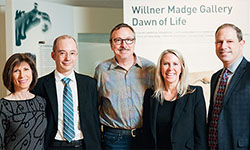
Willner Madge Gallery, Dawn of Life funded totally through philanthropy
Community funding from over 100 donors supported the realization of ROM’s newest permanent gallery.
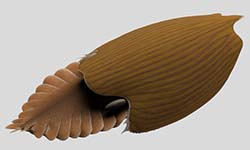
Massive new animal species discovered in half-billion-year-old Burgess Shale
With an estimated total length of half a meter, this new species was a giant compared to most animals that lived at the time.

Virtual Museum of Canada: Burgess Shale
The Burgess Shale in Yoho National Park preserves one of the world’s first complex marine ecosystems.
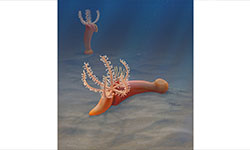
A Cambrian Puzzle
An extraordinary species helps illuminate early evolution.
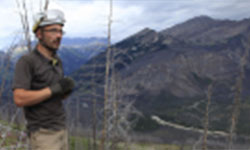
Burgess Shale Projects
Learn more of integrated and collaborative research programs in the Burgess Shale.
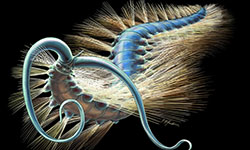
The Life Cycle of a New Fossil
An engaging blog post that explores the process of describing and studying fossils, such as Kootenayscolex barbarensis.

